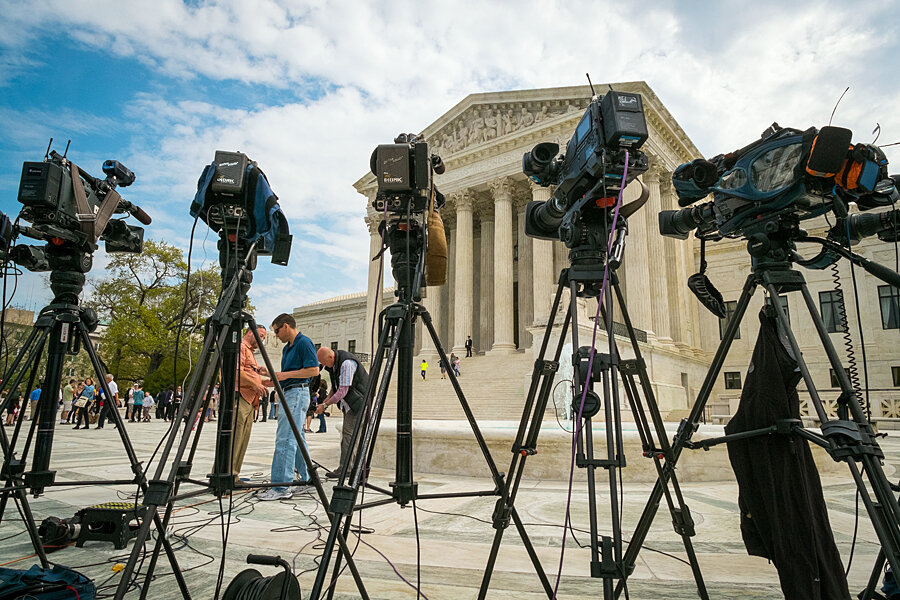US Supreme Court limits restitution payments to child pornography victims
Loading...
| Washington
Addressing a recurring dilemma in American criminal law, the US Supreme Court on Wednesday sought to resolve how federal judges are to determine multimillion-dollar restitution payments to victims of child pornography when the illicit images have been viewed and possessed by hundreds or thousands of defendants.
The high court faced three options: permit judges to order each defendant to pay the total amount of restitution; declare the impossibility of determining restitution in such cases; or permit judges to use their discretion and judgment in ordering restitution payments based on an assessment of the extent that the defendant’s criminal conduct proximately caused the child victim’s injuries.
On Wednesday, the Supreme Court decided on the third option.
In a 5-to-4 decision, the high court said federal law does not require a defendant guilty of possessing child pornography to pay the entire amount of a multimillion-dollar restitution award owed to a child victim whose abuse is depicted in images widely distributed on the Internet.
Instead, the court said that a person convicted of downloading and possessing photos of child pornography can be required to pay restitution only in proportion to the defendant’s contribution to injuries suffered by the child victim.
Writing for the majority, Justice Anthony Kennedy said the federal statute permits judges to apportion the restitution payment based on an assessment of the proportion of harm caused by each possessor of the images.
The justice acknowledged the difficulty of the undertaking.
“This cannot be a precise mathematical inquiry and involves the use of discretion and sound judgment,” he said in a decision joined by Justices Ruth Bader Ginsburg, Stephen Breyer, Samuel Alito, and Elena Kagan.
The decision comes in the case of a Texas man, Doyle Randall Paroline, who pleaded guilty to possession of child pornography after investigators searched his computer and found 300 images of children engaged in various sex acts.
Mr. Paroline was sentenced to two years in prison and 10 years of supervised release. He was also presented with a restitution demand from one of the child victims identified in two of the 300 illicit images. The amount: $3.4 million.
The identified victim was a young girl who was 8 and 9 years old in 1997 and 1998 when she was sexually abused and raped by her uncle. She is identified in court documents by the pseudonym Amy.
Paroline objected that he should not be liable for the total amount of Amy’s restitution. He said unlike Amy’s uncle, he had never met Amy and never distributed images of her sexual abuse.
By some estimates, as many as 70,000 individuals have downloaded and viewed the photos of Amy. Most will probably never be discovered and prosecuted.
But many have been. Judicially ordered restitution awards in cases involving Amy’s images vary greatly, from the full $3.4 million to payments ranging from $1,000 to $530,000, according to the court record.
A federal judge had declined to order any restitution payment in Paroline’s case because, the judge said, the government had failed to prove what role Paroline had played in Amy’s injuries. That decision was overturned by the Fifth Circuit Court of Appeals, which read the statute as mandating that Paroline be required to pay the entire $3.4 million in restitution.
In reversing that decision, Justice Kennedy said that Paroline’s possession of two images of Amy was not sufficient to cause her entire losses in light of the ongoing international trade in her images.
“Paroline’s contribution to the causal process underlying the victim’s losses was very minor, both compared to the combined acts of all other relevant offenders, and in comparison to the contributions of other individual offenders, particularly distributors ... and the initial producer of the child pornography,” Kennedy wrote in a 26-page opinion.
He said it is a bedrock principle that restitution should reflect the consequences of the defendant’s own conduct.
“Congress has not promised victims full and swift restitution at all costs,” Kennedy said. “To be sure, the statute states a strong restitutionary purpose; but that purpose cannot be twisted into a license to hold a defendant liable for an amount drastically out of proportion to his own individual causal relation to the victim’s losses.”
There were two dissenting opinions.
In one, Chief Justice John Roberts, joined by Justices Antonin Scalia and Clarence Thomas, said that the restitution requirement as written by Congress makes it “impossible” to determine a proper amount for Paroline to pay.
“When it comes to Paroline’s crime – possession of two of Amy’s images – it is not possible to do anything more than pick an arbitrary number,” Chief Justice Roberts said. “And arbitrary is not good enough for the criminal law.”
“No one suggests Paroline’s crime actually caused Amy to suffer millions of dollars in losses, so the statute does not allow a court to award millions of dollars in restitution,” he said. “Determining what amount the statute does allow – the amount of Amy’s losses that Paroline’s offense caused – is the real difficulty of this case.”
Roberts said the statute requires that restitution awards in child pornography cases be based exclusively on “the losses that resulted from the defendant’s crime – not on the defendant’s relative culpability.”
That congressional requirement allows no recovery for Amy in the Paroline case, Roberts said.
“We ought to say so, and give Congress a chance to fix it,” he wrote.
The second dissent was written by Justice Sonia Sotomayor. In her view, the statute as written by Congress mandates that each defendant – including Paroline – be required to pay Amy the full amount of $3.4 million.
The law, she said, provides that those who are unable to pay the full amount of restitution can make partial payments on a schedule set by the court.
The case is Paroline v. US (12-8561).





